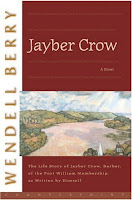Published 1943, reprinted 1971
Holt, Rinehart and Winston
New York, NY
Having finished the Miss Buncle series I finally got a chance to pick up a completely different novel by D. E. Stevenson. Celia's House came highly recommended to me by cousins and book bloggers Noel and Marie De Vries.
The Plot:
"Celia's House... is the story of Dunnian -- a spellbindingly lovely family estate in Scottish Border country -- and of the generations of Dunne family that live in it and love it dearly. Beginning in 1905 with ninety-year-old Celia Dunne, it delightfully portrays the bustling life of her heir and grand-nephew Humphrey Dunne, and his family of five rambunctious children. It follows the family over forty years -- through their youthful antics merry parties, heartbreaks and loves and marriages, as each in turn comes to maturity and an understanding of the enduring satisfaction Dunnian gives to their lives." (Summary courtesy of the publisher)
My Thoughts:
I found Celia's House a romantic and entertaining read. Although the story was a little reminiscent of two other books I've read it was still uniquely different... if that can be possible, which I think it can.
For starters, I was happy to have finally found the story plot that I've been looking for. The story of an English/Scottish estate and the adventures and drama that surrounds the family ensconced in the great home over the course of several decades. To be quite honest this is the type of story plot I expected when I picked up Brideshead Revisited by Evelyn Waugh earlier this year. Of course once I started reading Brideshead I realized it was NOTHING like I had imagined, which proved a little disappointing. Not so with Celia's House! This time, without any preconceived expectations I found that very story plot within this novel. You can imagine my delight; it was a very satisfying read.
The other novel that Celia's House reminds me of is Mansfield Park by Jane Austen. While it only occurs as a small part of the story I did notice several similarities between Celia's House and Mansfield Park. (i.e. the beautiful, quarrelsome, yet devoted sisters; the quiet, loving, yet imposed upon cousin; the handsome and somewhat clueless eldest son; a set of conniving siblings who try to worm their way into the family; and even a play! Even though Mansfield Park is probably my least favorite novel by Jane Austen I still enjoyed this nod by Stevenson towards the Bertram family and Mansfield Park's unlikely heroine, Fanny Price.
There's very little that I didn't like about this book. The only thing that comes to mind is a two weird scenes at the beginning of the story when it seems Ms. Stevenson is hinting at the presence of the ghost... although Celia's House is the farthest thing from a ghost story. I wasn't entirely certain if she intended to make a point with the two scenes, but I soon forgot it as the story carried me away from the past and in to the future of the characters. If asked I'd have to say my favorite characters were Mark (It was fun to watch him grow from a little boy to an established and respected gentleman.) and Debbie (I wasn't sure I would like Debbie when she first entered the story, but it didn't take long before I was cheering for her in the story.) Oddly enough, though the story is titled Celia's House I never felt attached to either Celia in the story. Perhaps I will feel differently after reading the novel's sequel, Listening Valley.
On a scale of 1-5, 1 being horrible and 5 being excellent I would rate Celia's House a 4.5. While some may argue that Celia's House is more a romance than a classic, I still say it's definitely worth owning, especially if you are a fan of Mansfield Park or coming-of-age family sagas. Some good news for readers of D. E. Stevenson is that Celia's House is relatively easy to find. Stat with your local library and if you find they don't own a copy then check the ILL system. I'm betting there's a god chance you'll find it this way. If you are like me and want to own a copy then you should be able to find a reasonably priced copy online thanks to the fact this book was reprinted several times until the late 1970s.
As for the sequel, Listening Valley, I am hoping to get my hands on a copy, so stay tuned because if I do I will be posting a review in early 2010.
-----------------
Curious to hear what other readers think? Check out the following reviews:
Fireside Musings (April 2008)
No Jam Today (January 2008)










